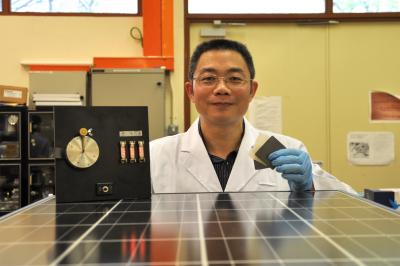The world’s first cost-effective and environmentally-friendly energy-storage membrane has been developed by Dr. Xie Xian Ning and his team from the National University of Singapore.
 Dr. Xie Xian Ning leads a team from the National University of Singapore's Nanoscience and Nanotechnology Initiative to develop the world's first energy-storage membrane that promises greater cost-effectiveness in delivering energy and an environmentally friendly solution.
Dr. Xie Xian Ning leads a team from the National University of Singapore's Nanoscience and Nanotechnology Initiative to develop the world's first energy-storage membrane that promises greater cost-effectiveness in delivering energy and an environmentally friendly solution.
Electrical energy storage has become an important concern due to energy shortage and climate changes. Existing energy storage technologies like supercapacitors and rechargeable batteries have complex configurations and have issues in production and fabrication costs. To overcome this issue, NUS researchers have developed a novel membrane that ensures higher cost-effectiveness in power storage and delivery. A polystyrene-based polymer has been used by the team to place the membrane between two metal plates. When charged by two plates, the membrane could store charge at 0.2 F/ sq cm.
The membrane exceeds the performance of supercapacitors and rechargeable batteries like lead-acid and lithium ion batteries. Additionally, it allows simpler configuration and low fabrication cost.
Potential applications of the novel soft and foldable membrane range from hybrid vehicles to solar panels and wind turbines. In a hybrid vehicle, the solution can be utilized for immediate energy storage and delivery. It reduces carbon emission, minimizes waste, enhances energy efficiency and increases the lifespan of batteries in hybrid cars. The membrane can be used in wind turbines and solar panels for energy storage and management. With the use of the membrane, instability issue can be avoided, as it has an ability to store surplus amount of the generated energy.
The team had started their research work in early 2010 and has received grants from National Research Foundation and the Singapore-MIT Alliance for Research & Technology (SMART). A US patent has been filed for this new innovation.